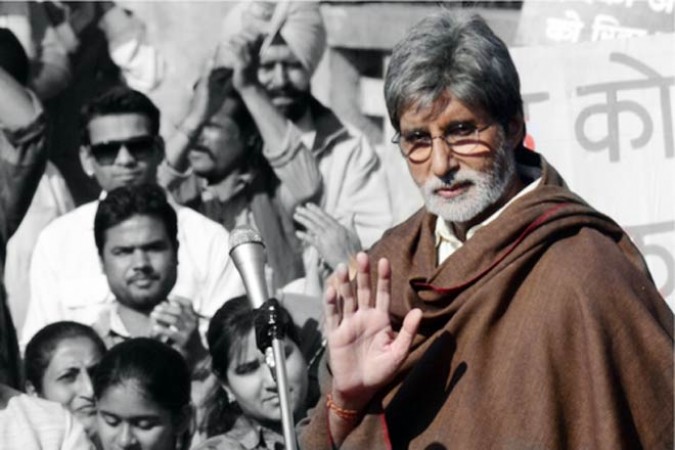
"Satyagraha" stood out as a movie that dared to explore the world of social activism and political change in the world of Indian cinema, where larger-than-life characters and opulence frequently take centre stage. The legendary Amitabh Bachchan, who played the well-known social activist Anna Hazare, was the star of this 2013 Prakash Jha film, which also featured a star-studded ensemble cast. The movie attempted to shed light on societal problems and the effectiveness of nonviolent protest by using a compelling plot and an ensemble cast. The film's meticulous portrayal of real-life locations and events, such as Bhopal, New Delhi, and the iconic Ralegan Siddhi, Anna Hazare's village, was one of its most notable features.
The majority of "Satyagraha" was filmed in New Delhi and Bhopal, two locations that have seen important social and political movements in India's history. The backdrop for the movie's depiction of political drama, protests, and social awakening was provided by these places. In Bhopal, a cutting-edge news studio set was painstakingly constructed to give the movie's story depth and authenticity.
Bhopal gave the production team the room and flexibility they needed to depict different aspects of the story because of its blend of urban and rural landscapes. The nation's capital, New Delhi, was instrumental in illuminating the political intrigue and power struggles that frequently characterise the political scene.
The choice to film in Ralegan Siddhi, a small village in Maharashtra that served as the centre of Anna Hazare's social activism, was one of the most important ones made during the movie's production. The simplicity of its citizens and Ralegan Siddhi's rural appeal stood in stark contrast to the political epicentres of Bhopal and New Delhi. This contrast emphasised the film's main point—the ability of regular people to effect change.
One of the primary shooting locations and a key location in the movie was Ralegan Siddhi, which has a population of about 2,500. The village developed into a distinct personality, reflecting the spirit of tenacity and tenacity that Anna Hazare's movement embodied.
Ralegan Siddhi was chosen as the location for the shoot for symbolic as well as practical reasons. Both in Anna Hazare's life and in the hearts of those who support his philosophy, the village holds a special place. Hazare started several social and environmental reforms in Ralegan Siddhi and carried them out with great success. The village underwent these reforms, including watershed development and afforestation, which turned it from a drought-prone region into a model of sustainable development.
The atmosphere of Ralegan Siddhi was painstakingly portrayed on screen by the filmmakers. With great attention to detail, the small streets, modest homes, village temple, and serene landscapes were all captured. This charming village felt like a character in itself thanks to the film's stunning cinematography, which perfectly captured its essence.
Ralegan Siddhi served as a constant reminder of Anna Hazare's ideals' brevity and purity throughout the film. The portrayal of the villagers, who gave Hazare's cause their steadfast support, gave the narrative authenticity and emotional depth. The village served as the movement's centre, serving as a visual reminder to viewers that grassroots movements are frequently where change begins.
"Satyagraha" aimed to inspire and elicit thought as well as amuse. The choice to shoot in Ralegan Siddhi was evidence of the filmmakers' dedication to authenticity and their desire to engage the audience more deeply.
The movie emphasised the significance of place in forming social and political narratives by emphasising the actual locations connected to Anna Hazare's movement. It emphasised how people's struggles and triumphs, like those of Anna Hazare, are frequently intricately tied to the places they call home.
A cinematic homage to the spirit of activism and social change, "Satyagraha" was more than just a movie. The filmmakers added a level of authenticity to the story that connected with viewers by deciding to shoot in Bhopal, New Delhi, and Ralegan Siddhi. Particularly, Ralegan Siddhi became a key figure who embodied the spirit and drive of Anna Hazare's movement.
A reminder that even in a world of spectacle and drama, there is a place for stories that explore the power of the common person to bring about extraordinary change can be found in the grand tapestry of Indian cinema, where the film "Satyagraha" stands. The choice of locations for the movie "Satyagraha" was not just for aesthetic reasons; it was also a statement about the importance of actual places in the journey of social activism, giving the movie a lasting impression.
The Extraordinary journey of Ajay Devgn's Directorial Role in 'Major Saab'